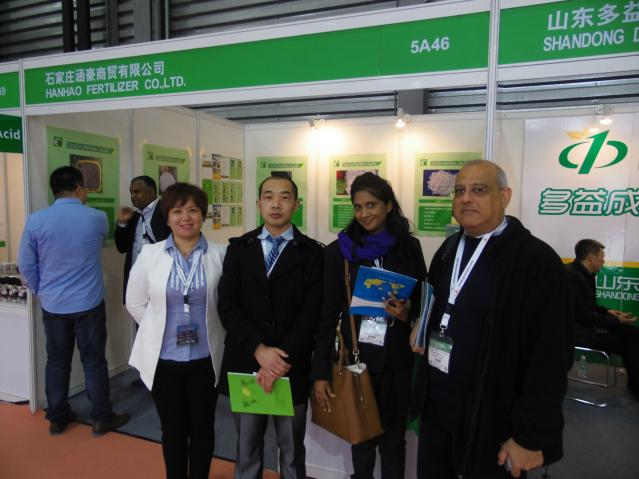
12月 . 10, 2024 19:56 Back to list
Choosing the Right NPK Fertilizer for Healthy Potted Plants Growth
Understanding NPK Fertilizer for Pot Plants
When it comes to ensuring optimal growth for pot plants, the right fertilization is crucial. One of the most popular types of fertilizers available is NPK fertilizer, which stands for Nitrogen (N), Phosphorus (P), and Potassium (K). Each of these nutrients plays a vital role in the health and vitality of plants, and understanding their significance can help you better care for your potted plants.
The Importance of NPK Components
1. Nitrogen (N) Nitrogen is essential for plant growth because it is primarily involved in the synthesis of amino acids, which are the building blocks of proteins. It plays a critical role in promoting lush, green foliage and overall vegetative growth. A nitrogen deficiency can result in stunted growth and yellowing of leaves, particularly older leaves. For pot plants like leafy greens and herbs, a higher nitrogen content is often desirable.
2. Phosphorus (P) Phosphorus is key for energy transfer and photosynthesis. It is vital for the development of roots, flowers, fruits, and seeds. A sufficient amount of phosphorus aids in the establishment of strong root systems, which is crucial for container plants that may face challenges in nutrient absorption due to limited soil volume. Signs of phosphorus deficiency include dark green or purplish leaves and poor flowering or fruiting.
3. Potassium (K) Potassium is integral for the overall stress tolerance of plants. It regulates various physiological processes, including water uptake and enzyme activation. Adequate potassium levels help plants resist disease, improve fruit quality, and increase drought resistance. Symptoms of potassium deficiency might include browning leaf edges and weak stems, which can make pot plants more susceptible to environmental stressors.
Choosing the Right NPK Fertilizer
When selecting an NPK fertilizer, it is essential to look at the N-P-K ratio printed on the packaging. This ratio indicates the percentage by weight of each nutrient in the fertilizer. For example, a fertilizer labeled 10-10-10 contains 10% nitrogen, 10% phosphorus, and 10% potassium.
Different plants have varying nutrient requirements. For instance, flowering plants typically benefit from a fertilizer with a higher phosphorus ratio, like 5-10-5, to encourage blooming. On the other hand, leafy vegetables may thrive with a higher nitrogen content, such as 20-10-10.
npk fertilizer for pot plants

Application Guidelines
When using NPK fertilizer for pot plants, it is essential to follow application guidelines to avoid over-fertilization, which can harm the plants
. Here are some tips1. Frequency Pot plants generally require fertilization every 4-6 weeks during the growing season (spring and summer). However, during the dormant period (fall and winter), plant growth slows, and fertilization can be reduced or eliminated.
2. Dilution It is often wise to dilute the fertilizer to half the recommended strength, especially for young or sensitive plants. This helps prevent root burn and nutrient shock.
3. Watering Always apply fertilizer when the soil is moist. This practice helps ensure that nutrients are absorbed effectively by the roots and reduces the risk of damage to the plant.
4. Observation Regularly observe your plants for signs of nutrient deficiency or excess. Adjust your fertilization strategy accordingly, as environmental factors can influence a plant's nutritional needs.
Conclusion
Understanding and using NPK fertilizer correctly is vital for the health of your pot plants. By recognizing the importance of nitrogen, phosphorus, and potassium, and by choosing the right type and applying it appropriately, you can ensure that your plants thrive, resulting in lush foliage, vibrant blooms, and bountiful harvests. Remember, the key to successful pot gardening lies not only in providing the right nutrients but also in observing and responding to the needs of your plants. Happy gardening!
-
10 10 10 Fertilizer Organic—Balanced NPK for All Plants
NewsJul.30,2025
-
Premium 10 10 10 Fertilizer Organic for Balanced Plant Growth
NewsJul.29,2025
-
Premium 10 10 10 Fertilizer Organic for Balanced Plant Growth
NewsJul.29,2025
-
Premium 10 10 10 Fertilizer Organic for Balanced Plant Growth
NewsJul.29,2025
-
50 Pound Bags of 13-13-13 Fertilizer for All Plants – Bulk & Organic Options
NewsJul.28,2025
-
High-Efficiency 15-30-15 Granular Fertilizer for Healthy Crops
NewsJul.28,2025
